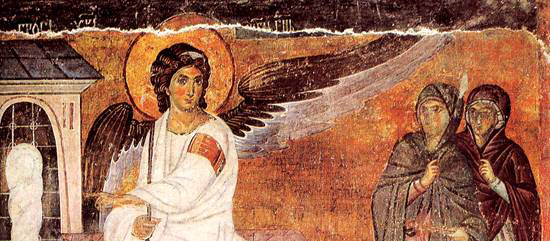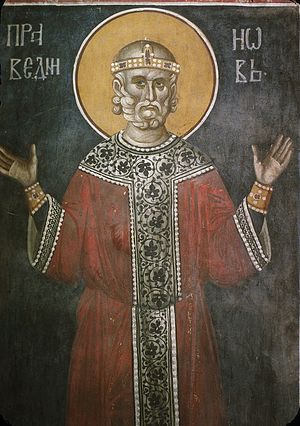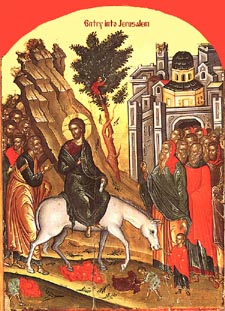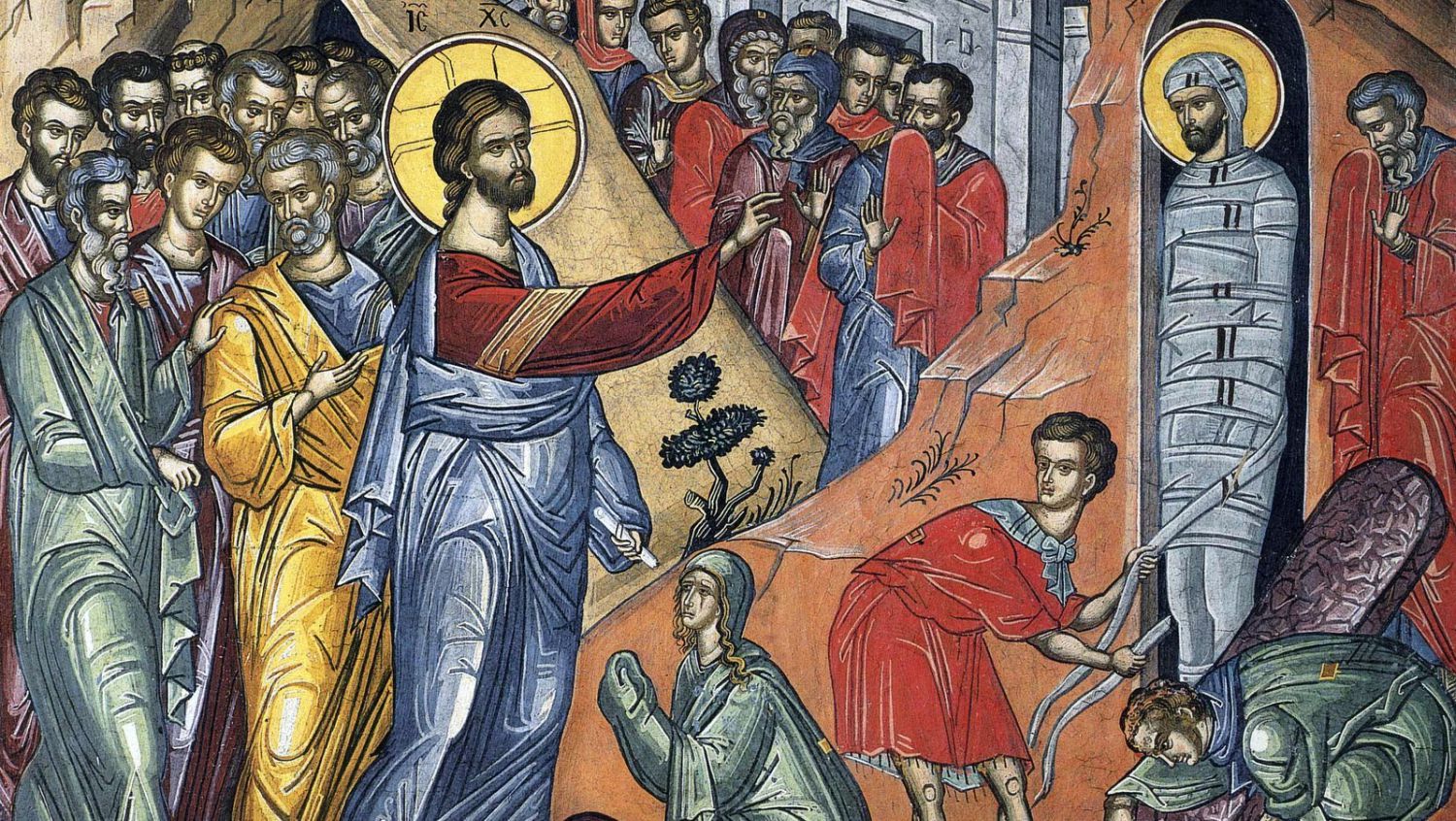Science
The Feast of Feasts - PASCHA
8. April 2018 - 13:03 On Saturday, the day after the crucifixion of the Lord, His disciples and followers were filled with gloom, for they had seen their Lord and Master die, crucified on a cross. As Holy Scripture tells us, there was a man named Joseph from the Jewish town of Arimathea. He was a member of the council, a good and righteous man, who had not consented to their purpose and deed, and he was looking for the kingdom of God. This man went to Pilate and asked for the body of Jesus (Luke 23:50-52). Pilate gave him leave. So he came and took away His body. [He and] Nicodemus also, who had at first come to Him by night...took the body of Jesus, and bound it in linen clothes...as is the burial custom of the Jews. Now in the place where He was crucified there was a garden, and in the garden a new tomb where no one had ever been laid. So because of the Jewish day of Preparation, as the tomb was close at hand, they laid Jesus there (John 19:38-42). The women who had come with Him from Galilee followed, and saw the tomb, and how His body was laid; then they returned and prepared spices and ointments. On the Sabbath they rested according to the commandment (Luke 23:55-56).
On Saturday, the day after the crucifixion of the Lord, His disciples and followers were filled with gloom, for they had seen their Lord and Master die, crucified on a cross. As Holy Scripture tells us, there was a man named Joseph from the Jewish town of Arimathea. He was a member of the council, a good and righteous man, who had not consented to their purpose and deed, and he was looking for the kingdom of God. This man went to Pilate and asked for the body of Jesus (Luke 23:50-52). Pilate gave him leave. So he came and took away His body. [He and] Nicodemus also, who had at first come to Him by night...took the body of Jesus, and bound it in linen clothes...as is the burial custom of the Jews. Now in the place where He was crucified there was a garden, and in the garden a new tomb where no one had ever been laid. So because of the Jewish day of Preparation, as the tomb was close at hand, they laid Jesus there (John 19:38-42). The women who had come with Him from Galilee followed, and saw the tomb, and how His body was laid; then they returned and prepared spices and ointments. On the Sabbath they rested according to the commandment (Luke 23:55-56).
Great and Holy Friday
6. April 2018 - 16:45 Great and Holy Friday
Great and Holy Friday
On Great and Holy Friday, Christ died on the Cross. He gave up His spirit with the words: “It is finished” (John 19:30). These words are better understood when rendered: “It is consummated.” He had accomplished the work for which His heavenly Father had sent Him into the world. He became a man in the fullest sense of the word. He accepted the baptism of repentance from John in the Jordan River. He assumed the whole human condition, experiencing all its alienation, agony, and suffering, concluding with the lowly death on the Cross. He perfectly fulfilled the prophecy of Isaiah:
“Therefore I will divide him a portion with the great, and he shall divide the spoil with the strong; because he has poured out his soul to death, and was numbered with the transgressors; yet he bore the sins of many, and made intercession for the transgressors.”
On the Passion of Christ and the Book of Job
2. April 2018 - 11:25 The Old Testament is revealed in the New Testament. The Book of Job reveals its meaning in an amazing way. It is read during the church services during Great Lent. This book prepares us to meet with the Suffering and Risen Christ.
The Old Testament is revealed in the New Testament. The Book of Job reveals its meaning in an amazing way. It is read during the church services during Great Lent. This book prepares us to meet with the Suffering and Risen Christ.
What does the Old Testament tell us about? It tells us about the interrelationship between God and man, just as do all the other Old Testament books. The Lord rules the world, rewards the righteous, and punishes sinners. However, as we can see from the Book of Job, not every affliction is punishment for sin.
In the holy book we read about how Job experiences onerous torments on the brink of death, and his friends urge him to repent in order to make God’s punishment cease. Job’s friends do not see that he is accepting torments not for his secret sins, or that the instigator of all his suffering is satan, who envies God and hates God’s servants. Job wars with satan. Christ accepts sufferings as does Job—not for himself, not for his iniquities. Christ is crucified for the sins of others.
Weekly Diocesan Bulletin - Sunday, April 1st, 2018
31. March 2018 - 21:20 PALM SUNDAY: THE ENTRANCE OF OUR LORD JESUS CHRIST INTO JERUSALEM
PALM SUNDAY: THE ENTRANCE OF OUR LORD JESUS CHRIST INTO JERUSALEM
FIRST ANTIPHON
VERSE: I love the Lord because He has heard the voice of my supplication.REFRAIN: Through the prayers of the Theotokos, O Savior, save us.
VERSE: Because He inclined His ear to me, therefore I will call on Him as long as I live.
REFRAIN: Through the prayers of the Theotokos, O Savior, save us.
VERSE: Glory to the Father and to the Son and to the Holy Spirit, now and ever and unto ages of ages. Amen.
REFRAIN: Through the prayers of the Theotokos, O Savior, save us.
Lazarus Saturday and Palm Sunday
31. March 2018 - 18:49 The week following the Sunday of Saint Mary of Egypt is called Palm or Branch Week. At the Tuesday services of this week the Church recalls that Jesus’ friend Lazarus has died and that the Lord is going to raise him from the dead (Jn 11). As the days continue toward Saturday, the Church, in its hymns and verses, continues to follow Christ towards Bethany to the tomb of Lazarus. On Friday evening, the eve of the celebration of the Resurrection of Lazarus, the “great and saving forty days” of Great Lent are formally brought to an end:
The week following the Sunday of Saint Mary of Egypt is called Palm or Branch Week. At the Tuesday services of this week the Church recalls that Jesus’ friend Lazarus has died and that the Lord is going to raise him from the dead (Jn 11). As the days continue toward Saturday, the Church, in its hymns and verses, continues to follow Christ towards Bethany to the tomb of Lazarus. On Friday evening, the eve of the celebration of the Resurrection of Lazarus, the “great and saving forty days” of Great Lent are formally brought to an end:
Having accomplished the forty days for the benefit of our souls, we pray to Thee, O Lover of Man, that we may see the holy week of Thy passion, that in it we may glorify Thy greatness and Thine unspeakable plan of salvation for our sake . . . (Vespers Hymn).
Synaxarion for Lazarus Saturday
30. March 2018 - 12:20 On this day, the Saturday before Palm Sunday, we celebrate the fourth-day raising from the dead of Lazarus, the righteous friend of Christ.
On this day, the Saturday before Palm Sunday, we celebrate the fourth-day raising from the dead of Lazarus, the righteous friend of Christ.
Lazarus[1] was a Hebrew, of the sect of the Pharisees and, as far as is known, he was the son of Simon the Pharisee, who dwelt in the village of Bethany. He became a friend of our Lord Jesus Christ when He sojourned on earth for the salvation of our race. For when Christ continually conversed with Simon, entering his house and discoursing on the resurrection from the dead, Lazarus was quite pleased with the genuineness of this teaching, and not only he, but also his two sisters, Martha and Mary.

